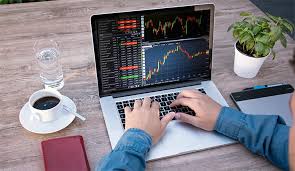
Forex trading, or foreign exchange trading, is the process of buying and selling currencies in a global decentralized market. It operates 24 hours a day, five days a week, offering traders opportunities to profit from currency price movements. In this article, we will delve into the intricacies of Forex trading by illustrating it through a comprehensive example. Whether you are a novice or an experienced trader, grasping these concepts will be crucial for your success in the market. For those looking to begin their journey in Forex, consider partnering with a reputable platform like forex trading example Trading Broker UZ.
The Basics of Forex Trading
Before we dive into the example, it is essential to establish a foundational understanding of how Forex trading works. The Forex market operates on the principle of currency pairs, where one currency is traded against another. The most commonly traded currency pairs include EUR/USD, GBP/USD, and USD/JPY.
Currency Pairs Explained
Currency pairs consist of two currencies, known as the base currency and the quote currency. For instance, in the currency pair EUR/USD, the Euro is the base currency, while the US Dollar is the quote currency. The price of this pair indicates how much of the quote currency is needed to purchase one unit of the base currency. A price of 1.20 means that 1 Euro can be exchanged for 1.20 US dollars.
A Comprehensive Example
To illustrate Forex trading, let’s consider a fictional trader named John, who is looking to trade the EUR/USD currency pair. John has researched and believes that the Euro is likely to strengthen against the US Dollar due to upcoming economic reports.
Setting Up the Trade
John decides to buy a standard lot of EUR/USD at a price of 1.20. As a standard lot represents 100,000 units of the base currency, he is purchasing 100,000 Euros. Therefore, the total cost of this trade in US dollars is calculated as follows:
100,000 Euros x 1.20 USD/Euro = 120,000 USD
Leverage in Forex Trading

Many Forex traders use leverage, which allows them to control a larger position with a smaller amount of capital. For this example, let’s assume John is using a leverage of 100:1. This means he only needs to deposit 1% of the total trade value as margin:
120,000 USD / 100 = 1,200 USD
With this margin, John can control a trade size of 100,000 Euros while only using $1,200 of his capital.
Monitoring the Trade
After executing his buy order, John keeps an eye on the market. A few hours later, the price of EUR/USD rises to 1.25. Encouraged by this upward movement, he decides to close his position to realize his profits.
Calculating Profit
To calculate John’s profit from this trade, we need to determine the difference between his opening and closing prices:
Closing Price - Opening Price = Profit per Euro
1.25 - 1.20 = 0.05 USD
Now, we multiply the profit per Euro by the number of Euros John traded:
0.05 USD x 100,000 Euros = 5,000 USD

Thus, John made a profit of $5,000 from his trade.
Understanding Risks and Rewards
Although the potential for profit can be significant, Forex trading inherently carries risks. Factors such as market volatility, economic news releases, and geopolitical events can significantly affect currency movements. Thus, traders must implement risk management strategies as they navigate the market.
Implementing Risk Management Strategies
Common risk management strategies include setting stop-loss orders, which automatically close a trade at a predetermined loss level, and position sizing, which dictates how much capital to risk on a single trade. Effective risk management ensures that even in the event of a losing trade, the trader can continue participating in the market.
Key Takeaways
In conclusion, Forex trading offers an exciting yet challenging opportunity for traders to profit from currency movements. Through our example of John trading EUR/USD, we visualized the mechanics of a trade, from entry to exit, alongside the implications of leverage and risk management. Understanding these concepts is crucial for anyone looking to venture into Forex trading successfully.
Getting Started with Forex Trading
For those who feel inspired to start trading Forex, choosing the right broker is a critical first step. Look for a broker that offers a user-friendly platform, competitive spreads, educational resources, and solid customer support. Always remember to practice due diligence and trading responsibly.
Overall, Forex trading can be both rewarding and thrilling. By understanding the basics and employing sound trading strategies, you can enhance your chances of success in this dynamic market.

